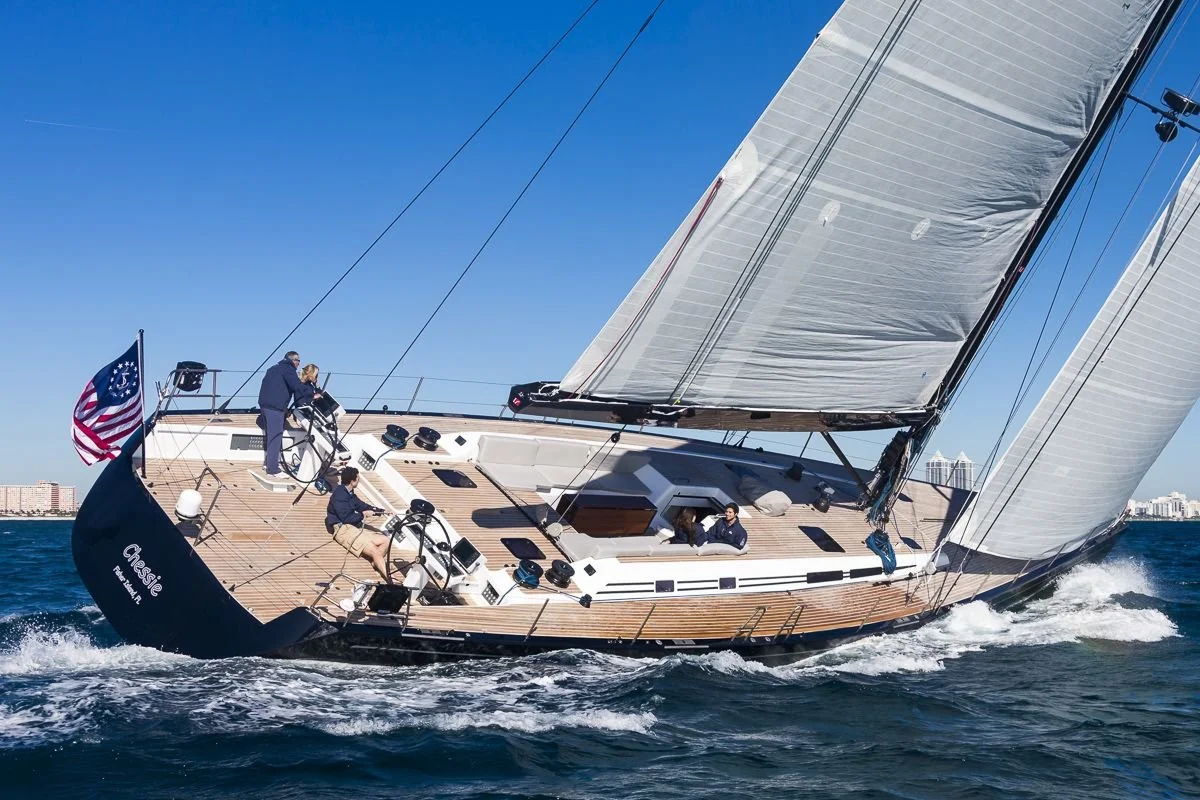Leonardo Ferragamo
Strategic Identity Through Wind
The first time I met Leonardo Ferragamo was at a yacht show in Sanya. Among polished decks and offshore champagne, he appeared calm, almost geometric—like he had been cut from another template. A few months later, I found myself walking beside him in Florence, in a stone-walled study where he handed me a copy of his father’s book—Salvatore Ferragamo: The Life of a Visionary. There was nothing performative in the gesture. It wasn’t a gift, it was a key. Soon after, I followed him to the shipyard in Pietarsaari, Finland, where snow brushed against carbon hulls and teak decks were assembled like sacred geometry. I realized then that he doesn’t simply commission beauty—he engineers mythology.
When Leonardo Ferragamo—heir to one of the world’s most refined luxury dynasties—acquired Nautor’s Swan, he wasn’t simply buying a boat brand. He was installing a new module in his personal operating system: a vessel that moved not just through water, but through reputation, legacy, and control.
The story begins in 1998, when Ferragamo, already a seasoned sailor and longtime admirer of Nordic craft precision, saw an opportunity not just to invest in a shipyard—but to inhabit one. Nautor’s Swan, founded in 1966 in Pietarsaari, Finland, had already become a cult object among sailors and aristocrats. Its breakthrough came with the Swan 36, designed by Sparkman & Stephens and crafted from fiberglass—a bold innovation at the time. What Ferragamo recognized wasn’t just heritage, but unrealized structure: a brand capable of expanding from performance sailing into the realm of cultural permanence.
Leonardo didn’t arrive to rebrand; he came to reinforce. Under his ownership, Swan deepened its architectural language—balancing Frers-designed speed with interiors worthy of continental quietude. In Ferragamo’s hands, the boats became more than fast—they became fluent. The Swan 80FD, in particular, is his answer to a very specific question: how do you embody soft power through something that doesn’t need to speak?
Unlike the performative excess of megayachts, the 80FD functions like he does—understated, coded, permanent. It is not made to be seen by everyone, but recognized by those who matter.
Ferragamo doesn't race for trophies—he configures for longevity. In his hands, the Swan 80FD becomes a private signal of executive ritual, where others perform leadership, sailing requires it. Every journey is a real-time test of strategy, adaptability, and command. It becomes a floating philosophy, where minimal-fuel, maximum-range logic mirrors his brand ethos: timeless form meeting uncompromising function. It operates as a legacy platform—not an object to be used up, but a script passed down. Ownership, like heritage, becomes a system of encrypted succession. It carries a sense of narrative discipline; just as Ferragamo fashion avoids overstatement, the 80FD offers spatial silence, speaking only when context demands it. And it offers jurisdictional freedom—unlike static villas or registered assets, the Swan allows movement through global zones without anchoring exposure.
Ferragamo’s relationship with the Swan 80FD is not aesthetic—it’s architectural. It is how he codes continuity. It is how he moves through the world: not as a man who owns a yacht, but as a man who operates a sovereign object.
For anyone studying the new grammar of post-luxury strategy, the Swan 80FD is not a chapter. It’s a footnote from the author himself.






